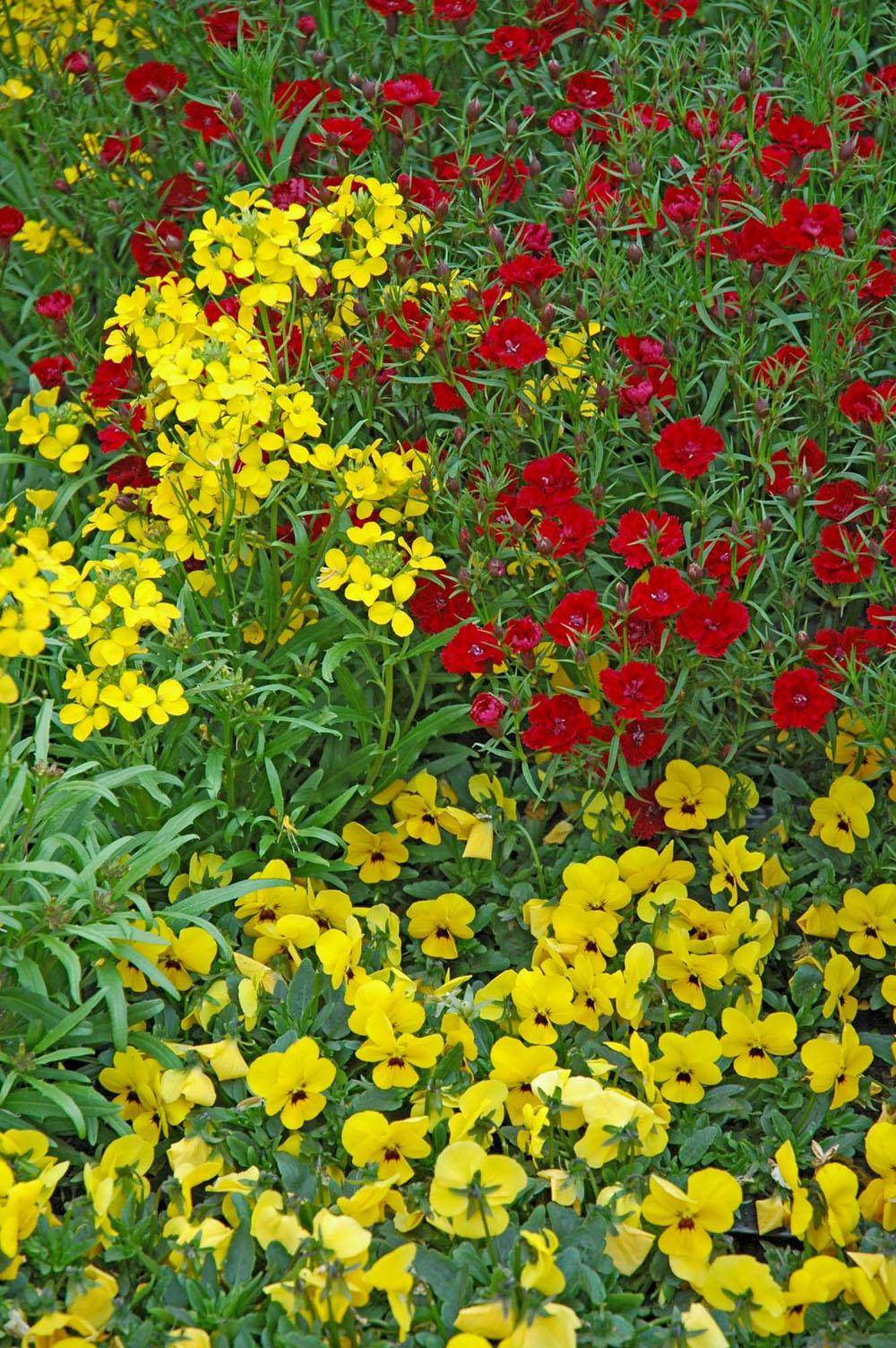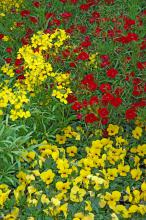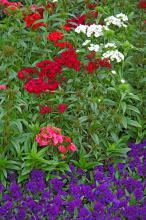Information Possibly Outdated
The information presented on this page was originally released on November 2, 2006. It may not be outdated, but please search our site for more current information. If you plan to quote or reference this information in a publication, please check with the Extension specialist or author before proceeding.
Pansy Pals offer stunning colors
By Norman Winter
MSU Horticulturist
Central Mississippi Research & Extension Center
My repeated encouragement to take advantage of pansy planting time in the South may have motivated you to purchase these beautiful cool-season plants, but also left you wondering what to plant with them. Pan American Seed, one of the industry leaders, has come up with a novel approach to this question called Pansy Pals.
They are working to help garden centers market their plants. Their approach helps growers with crop scheduling and choosing new varieties. Their efforts are directed at helping gardeners have a dazzling landscape by planting cool-season partners for a really long season of color.
Before explaining these floral companions, I still want to plead once again for some good bed preparation. It seems the rains are coming much more regularly now, which is good. What would be bad is for the plant roots to sit in soggy soil and die.
So before planting, work in 3 to 4 inches of organic matter from your compost pile if you have one or store-bought amendments like peat or humus. Let me chase the proverbial rabbit and say this is an ideal time to get a compost pile started, saving those colorful leaves that are beginning to hit the ground.
As you are planting pansies that for the most part will reach about 8 inches tall with an equal spread, the door is opened for medium and tall flowers as well as colorful foliage. There is an almost endless array of color combinations available.
One Pansy Pal that hit the market last year was the Citrona Orange or Citrona yellow. These plants, known botanically as Erysimum, are in the cabbage family but are grown for flowers. They reach about 18 inches tall. One grower I talked to recently said that every customer who tried them last year wanted more this fall.
A stand of 18-inch tall flowers in orange or yellow complements pansies that are blue or violet. We have a lot of choices when it comes to cool-season flowers that in the 18- to 24-inch tall range.
Dianthus is certainly one of my favorites. The Bouquet series that I mentioned a couple of weeks ago is hard to beat, but you also should consider the Dynasty series with its double flowers or the Amazon series that was the cut-flower of the year for 2005. The dianthus gives you the option of using reds, pinks and whites as a backdrop for your pansies.
As you shop, don't forget about snapdragons. You'll find taller varieties like Sonnet, Liberty Classic and Solstice in just about any color you want, including bi-colored selections. Shorter varieties like Montego and Snapshot that only reach 12 to 15 inches can be planted in colorful drifts adjacent to your pansies.
At the recent Fall Flower and Garden Fest in Crystal Springs, snapdragon relatives Diascias and Nemesias were drawing attention. The Diascias were the Flying Colors series and Diamonte Coral Rose, an All-America Selections winner. These were planted in August, which most would have said was very early. The Diascias reach 8 to 12 inches tall and are reportedly cold hardy down to 0 degrees.
The Nemesias also were looking good despite being planted in the extreme heat. These little fragrant flowers reach about 12 inches tall and are hardy to 10 degrees. There are some blue shades available in this group of plants that can make striking combinations with yellow or orange pansies.
I always get a kick out of those who call it a gamble to buy new flower varieties. It's a gamble when you buy a relative's used car or go to a casino; trying new flowers is just fun. Visit your garden center this weekend and get some Pansy Pals.




